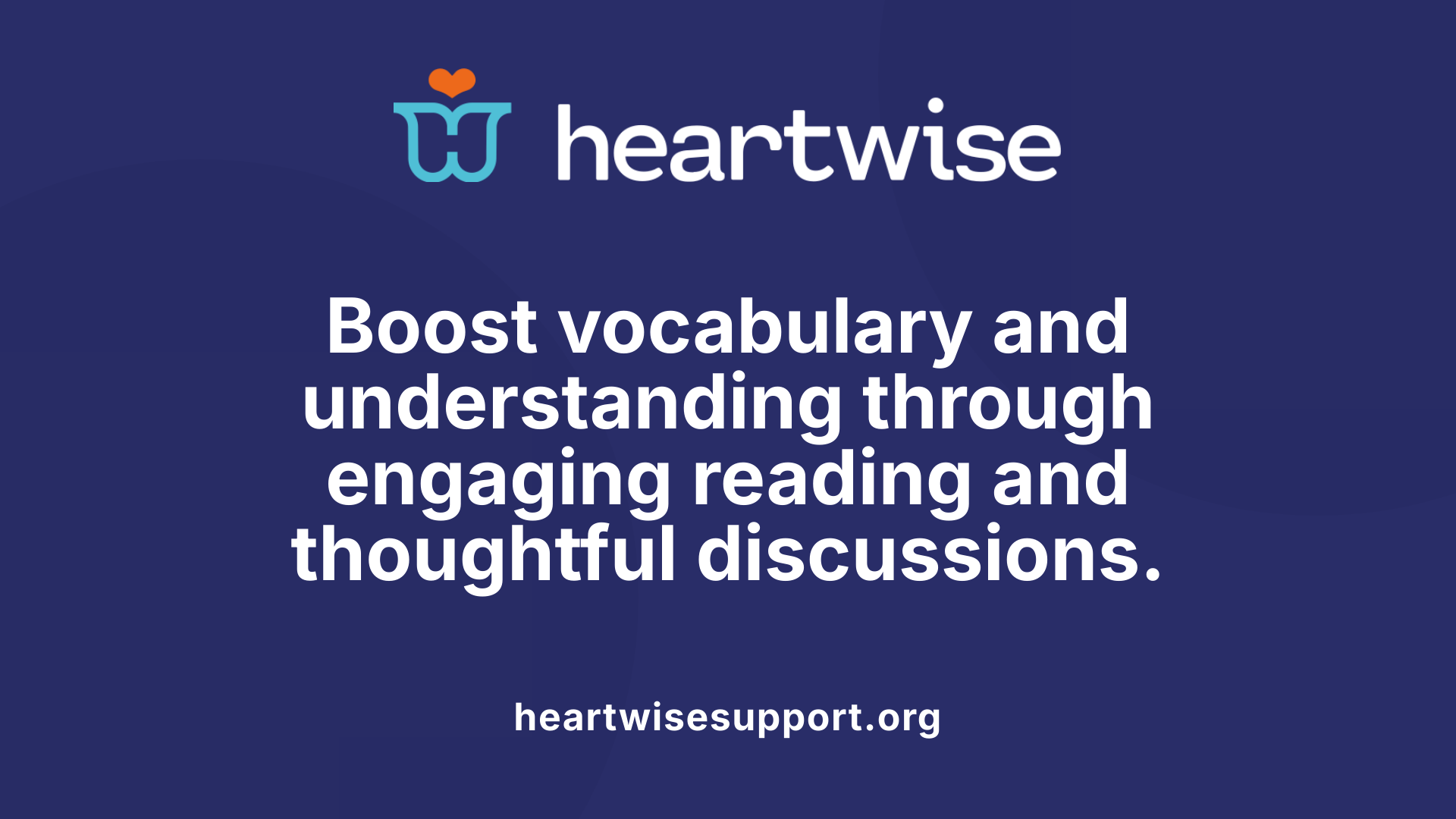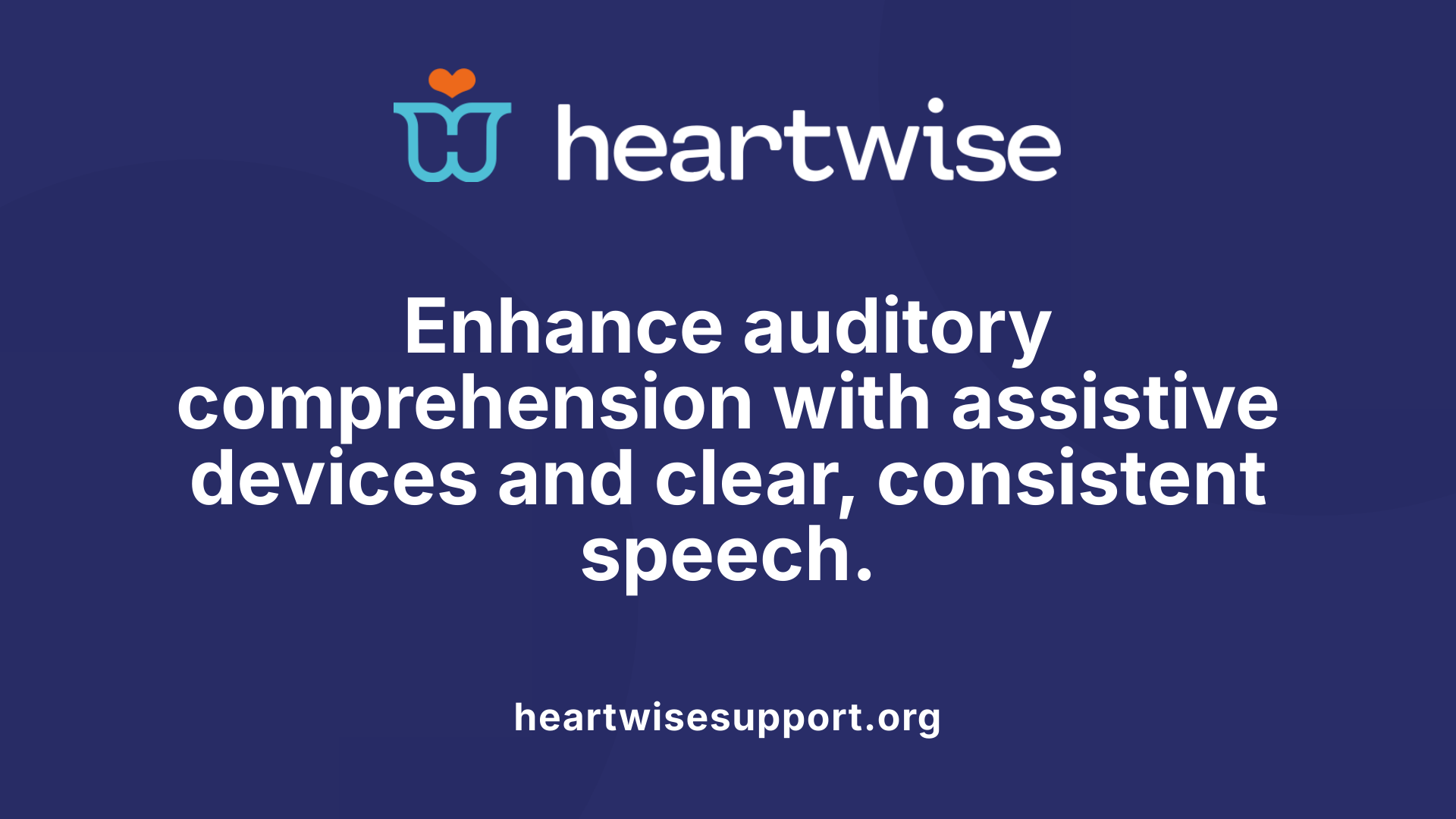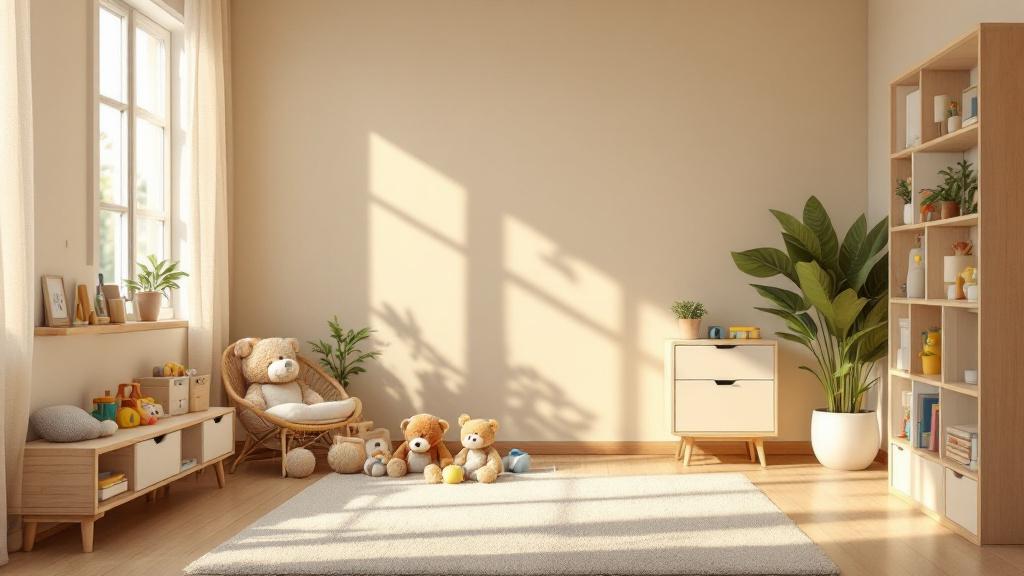Enhancing Listening Skills for Better Communication
Listening is a vital component of effective communication, especially in speech therapy settings. Developing strong listening skills involves active engagement, awareness of verbal and non-verbal cues, and practical exercises. This comprehensive guide explores effective strategies and techniques that caregivers, teachers, and speech therapists can use to improve listening comprehension, foster better interactions, and support language development in children and adults alike.
Core Principles of Active Listening in Speech Therapy
What are effective listening strategies for speech therapy?
In speech therapy, applying effective listening strategies is crucial to fostering meaningful communication. These strategies involve maintaining full focus on the speaker, avoiding distractions, and actively engaging with what they say. Therapists and clients should pay close attention to both spoken words and non-verbal cues, such as facial expressions, tone of voice, and body language, which provide important clues about feelings and intentions.
Building cultural awareness and sensitivity is also important, particularly when working with individuals from diverse backgrounds. Recognizing different communication styles and understanding cultural contexts can improve mutual understanding.
To enhance listening skills, therapy sessions often encourage clients to slow down their speech, ask clarifying questions when unsure, and reflect on what they hear. Techniques such as vocal exercises and mindful articulation help clients become more aware of their speech patterns. These approaches promote better comprehension, help in correcting speech errors, and support overall effective communication.
Practicing these strategies not only boosts speech clarity but also nurtures active listening habits essential for successful interactions in daily life.
Effective Listening Strategies for Various Settings
Which techniques are helpful in improving overall listening skills?
Improving listening skills involves a combination of attentive behaviors and environmental adjustments. One fundamental technique is maintaining eye contact, which signals focus and encourages the speaker to continue. Observing non-verbal cues such as facial expressions, gestures, and body language provides additional insights into the speaker’s emotions and intentions.
Providing feedback is another crucial strategy. Nodding, summarizing what has been said, or asking clarifying questions shows engagement and helps reinforce understanding. These actions create a collaborative atmosphere, making the conversation more meaningful.
Creating a distraction-free environment is equally important. Eliminating background noise and finding a quiet place helps the listener concentrate fully on the speaker.
Practicing patience and resisting the urge to interrupt are vital for respectful communication. Waiting for pauses to respond or ask questions allows the speaker to express themselves fully and promotes better exchange of ideas.
In addition, active listening techniques such as visualizing content, asking relevant questions, and refraining from immediate judgments deepen understanding. Regularly practicing these strategies across different settings — whether casual, educational, or professional — can dramatically improve one's ability to accurately interpret messages.
Overall, these approaches foster stronger relationships, enhance learning, and support clear, effective communication in everyday interactions.
Creating Conducive Environments for Better Listening

What are key techniques to ensure effective listening?
Effective listening is more than simply hearing words; it involves actively engaging with the speaker to fully understand the message. Key strategies include maintaining eye contact and positive body language, which show attentiveness and encourage openness.
Avoiding distractions such as mobile phones or background noise helps keep focus on the conversation. Showing empathy by attempting to understand the speaker's feelings and perspectives fosters a deeper connection and trust.
Clarifying any uncertainties through questions or paraphrasing what has been said verifies understanding. Giving constructive feedback demonstrates active participation and signals that you value the conversation.
Implementing these methods creates an environment where effective communication thrives, making interactions more meaningful and productive.
How can the environment support better listening?
Creating the right physical setting plays a crucial role in listening quality. Reducing background noise is essential; a quiet space minimizes auditory interference and helps listeners concentrate.
Engaging in activities that promote joint attention, such as focusing on a common object or task, can significantly improve listening and understanding. These activities help bind vocabulary to real-world objects and ideas, enriching language comprehension.
Using acoustic highlighting—emphasizing important words or sounds—draws attention to critical parts of the message, aiding auditory processing.
By ensuring these environmental factors are in place, both adults and children can enhance their ability to listen effectively, leading to clearer communication and stronger relationships.
Practical tips for creating an environment conducive to effective listening
| Tip | Description | Benefits |
|---|---|---|
| Reduce background noise | Turn off TVs, radios, and avoid noisy surroundings | Improves clarity of speech and focus |
| Engage in joint attention | Focus on the same object or activity during conversations | Builds vocabulary and supports comprehension |
| Use acoustic highlighting | Emphasize key words or phrases during speech | Aids in auditory processing and retention |
| Maintain eye contact | Look at the speaker directly, signaling engagement | Encourages speaker confidence and attentiveness |
| Create a quiet space | Designate dedicated areas for conversations or learning activities | Enhances concentration and reduces distractions |
Implementing these strategies creates a supportive environment that fosters active listening, making communication more effective and enjoyable for all involved.
Practical Exercises to Develop Listening Skills

What are practical exercises for improving listening skills?
Engaging children in fun and interactive activities is an effective way to build their listening abilities. One popular game is Simon Says, which requires children to listen carefully and follow specific commands. This game sharpens their attention span and ability to process instructions quickly.
Another helpful activity is the Treasure Hunt. In this game, children are given directions to find a hidden prize. It helps them practice listening to detailed instructions and enhances their ability to follow multi-step directions.
The Clean Up Game is also valuable. Children are given cleanup instructions, and they must follow them correctly. This not only makes cleaning fun but also improves their comprehension and ability to listen amid a noisy environment.
These activities turn practicing listening skills into enjoyable experiences. By incorporating games like these, children can develop their listening and understanding skills gradually, embedding learning into play.
| Activity | Description | Focus Area |
|---|---|---|
| Simon Says | Follow commands in a game format | Attention & following directions |
| Treasure Hunt | Find hidden objects using spoken clues | Listening & task comprehension |
| The Clean Up Game | Follow cleanup instructions during play | Interactive listening & instructions |
Utilizing engaging exercises such as these offers children practical opportunities to enhance their listening skills in a playful and meaningful way.
Enhancing Vocabulary and Comprehension through Reading and Discussions

How can reading activities support listening skills?
Reading activities play a vital role in developing children's listening comprehension. When adults read aloud to children, they not only introduce new vocabulary but also create opportunities for children to practice active listening.
Pointing to illustrations and discussing what they show helps children connect visual cues with spoken words, which enhances understanding and attention. It encourages them to focus on details and interpret non-verbal information.
Asking questions like 'how does the character feel?', 'when?', 'where?', and 'what might happen next?' stimulates children to listen carefully and think critically about the story. These questions guide them to process information, understand emotions, and predict outcomes.
Engaging children in these conversations supports vocabulary expansion and improves their ability to follow along with stories. It also encourages emotional awareness, understanding story structure, and enhancing focus during listening activities.
Overall, reading combined with interactive discussion makes listening practice engaging and meaningful. This approach helps children build essential listening skills, develop vocabulary, and foster a love for stories, laying a strong foundation for communication and overall language development.
Supporting Listening Development with Assistive Devices and Clear Speech

What are effective methods for supporting auditory comprehension?
Supporting auditory comprehension, especially in children with hearing difficulties, requires a combination of strategies to optimize their listening environment. Consistent use of hearing devices such as hearing aids or cochlear implants is fundamental. Ensuring these devices are worn during all waking hours helps children receive full access to speech sounds and language input.
Staying close during conversations is another effective method. When adults or caregivers remain within the child's auditory range, it enhances speech clarity and makes it easier for the child to understand and process spoken words.
Reducing background noise and creating quiet spaces further support effective listening. Background sounds like chatter, television, or radio can distract or mask important speech cues. A calm environment allows children to focus more on speech sounds and improves overall comprehension.
These approaches, when combined with visual cues such as gestures and facial expressions, as well as clear speech from caregivers, significantly aid in developing stronger listening skills. The goal is to ensure children receive consistent, clear auditory information that promotes their language growth and communication abilities.
How do these methods compare with other listening support techniques?
| Method | Purpose/Benefit | Additional Information |
|---|---|---|
| Use of hearing devices | Maximize speech reception | Regular check-ups ensure optimal functioning |
| Staying close during communication | Improve clarity and engagement | Enhances understanding in noisy environments |
| Reducing background noise | Minimize distractions | Creates a better listening environment |
By incorporating these strategies into daily routines, caregivers and therapists can create a more conducive environment for developing listening skills. This holistic approach supports children's ability to comprehend spoken language and enhances their overall communication development.
Using Acoustic Highlighting and Pausing for Better Understanding

What techniques are helpful in ensuring effective listening?
Effective listening goes beyond simply hearing words; it involves actively engaging with what the speaker is saying. One essential method is acoustic highlighting, which means emphasizing important words or sounds during conversation. This helps the listener identify key information and comprehend the message more clearly.
Pausing is another vital technique. When speakers pause intentionally, it gives listeners time to process the information, think about responses, and improve overall understanding. For listeners, pausing before responding also shows attentiveness and patience, fostering better communication.
Building vocabulary through auditory reinforcement plays a foundational role. Repeating words, phrases, and key concepts helps embed them into memory. This repetition supports comprehension especially in language learning or complex discussions.
By combining these strategies—highlighting critical sounds, pausing effectively, and reinforcing vocabulary—listeners can significantly enhance their ability to understand spoken language. This approach is supported by research suggesting that such techniques activate auditory processing pathways, improve focus, and facilitate the retention of spoken information.
Encouraging Verbal Production and Language Expansion
How can speech therapy facilitate language development through listening?
Speech therapy plays a vital role in nurturing a child's language skills, especially through active listening practices. One effective technique involves encouraging children to repeat and then expand their utterances. For example, if a child says "dog," a therapist might model "big dog" or "brown dog," adding descriptive words or more complex structures. This practice helps children understand how to build on their initial ideas and vocabulary.
Another strategy involves providing choices in questions. Asking children to choose between options, such as "Do you want the red ball or the blue ball?" promotes decision-making and verbal responses. It stimulates their vocabulary and encourages active participation during conversations.
Reinforcing vocalizations and efforts at speech is also crucial. When a child babbles or attempts to say a word, acknowledging their efforts with praise and encouragement boosts motivation. This positive reinforcement helps in establishing deliberate speech habits and builds confidence.
These techniques not only improve listening skills but also bolster expressive language abilities. As children practice repeating, expanding, and making choices, they develop a stronger foundation for more fluent speech and better comprehension. Incorporating speech therapy activities centered around these methods can significantly enhance language growth.
For additional guidance, exploring "speech therapy techniques for language expansion" provides detailed approaches tailored to individual needs, emphasizing the importance of consistency and patience in this developmental journey.
Building Stronger Listening Foundations for Life
Developing robust listening skills is a cornerstone of effective communication and language development. Through active engagement, practical exercises, and supportive environments, children and adults can significantly enhance their understanding and interpretative abilities. Incorporating these strategies in speech therapy and everyday interactions fosters a lifetime of better connections, clearer expression, and richer relationships.
References
- A Guide on How to Develop Listening Skills
- Fun Ways To Improve Listening Skills Today! - Speech Therapy Talk
- Essential Strategy Cards to Use at Home With Children
- What's the most efficient way of improving English listening skills?
- How to Develop Cross-Cultural Communication Skills
- How To Improve Verbal Communication Skills At Work
- Techniques and Tips on How to Improve Your Speaking Voice
- How To Improve Listening Skills (With Steps And Types) - Indeed
- How to Improve Listening Skills and Why It's Important - Indeed
- How to Improve Listening Skills (With FAQs and Steps) - Indeed











